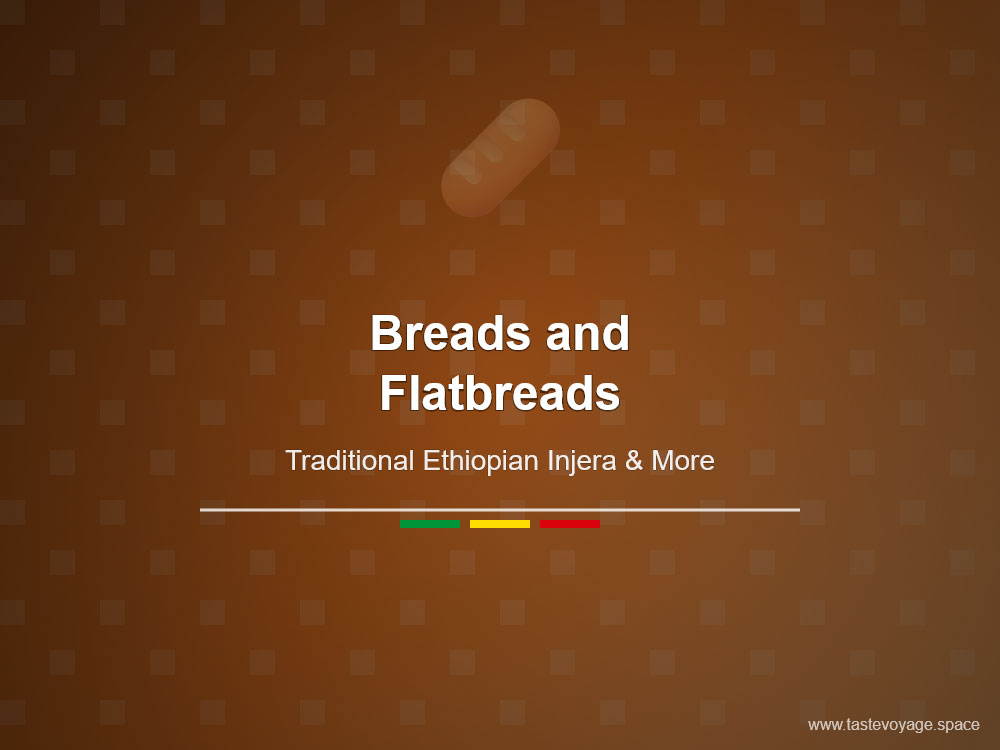Easy Ethiopian Bread Recipe – No Special Equipment Needed
Travel the World Through Food >> Breads and Flatbreads>>Ethiopian Cuisine>> Easy Ethiopian Bread Recipe – No Special Equipment Needed
Easy Ethiopian Bread Recipe – No Special Equipment Needed
Discovering the Rich Heritage of Ethiopian Bread
Ethiopian bread holds a special place in the heart of Ethiopian Cuisine, serving as both a staple and a symbol of cultural unity. Known for its unique texture and flavor, this bread is more than just a food item—it’s a reflection of history, community, and tradition. Whether enjoyed at a family gathering or during a festive celebration, Ethiopian bread embodies the warmth and hospitality of its people. Its significance extends beyond the kitchen, symbolizing shared experiences and the enduring spirit of Ethiopian culture.
The Cultural Significance of Ethiopian Bread
In Ethiopia, bread is deeply woven into everyday life and social customs. It acts as a communal food, often served with various stews, vegetables, and meats, fostering a sense of togetherness. Many traditional ceremonies and gatherings revolve around the preparation and sharing of this bread, emphasizing its role as more than nourishment—it is a unifying force among communities.
Ethiopian bread, particularly injera, is renowned for its distinctive sour flavor, which is achieved through natural fermentation. This process not only enhances its taste but also connects generations of bakers who have perfected the craft over centuries. The preparation of injera is often a communal activity, where skills are passed down and stories are shared around the preparation table. This deep-rooted tradition highlights the importance of preserving cultural heritage through culinary practices.
Culinary Significance and Unique Characteristics
What sets Ethiopian bread apart is its unique preparation method and ingredients. Typically made from teff flour, a tiny grain native to Ethiopia, injera boasts a slightly tangy taste and a spongy texture. Its porous surface makes it an ideal accompaniment for absorbing rich Stews and sauces, enhancing the dining experience.
Ethiopian bread also plays a vital role in the country’s diet because it provides essential nutrients and is a versatile base for various dishes. Its fermentation process creates beneficial probiotics, contributing to health and digestion. The bread’s light, airy texture allows it to serve as both a utensil and a plate, simplifying the meal and emphasizing communal sharing.
Making Ethiopian Bread Without Special Equipment
One of the most inspiring aspects of Ethiopian bread is that you can appreciate and even recreate its essence without specialized tools. This accessibility makes it easier for food enthusiasts worldwide to connect with Ethiopian culinary traditions. The process emphasizes patience, skill, and respect for the ingredients, allowing anyone to experience the cultural richness embedded in each loaf.
Embracing Ethiopian Culinary Heritage
In summary, Ethiopian bread is much more than a simple food item. It is a beautiful illustration of Ethiopia’s rich cultural history and culinary ingenuity. Its unique flavor, texture, and significance in communal life make it a fascinating dish worth exploring. By understanding and appreciating its cultural value, we honor the traditions and stories that make Ethiopian cuisine so vibrant and enduring. Whether you’re an experienced cook or a curious newcomer, embracing Ethiopian bread enriches your culinary journey and deepens your appreciation for Ethiopia’s remarkable food heritage.
